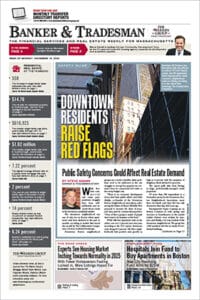
Lew Sichelman
New affordability estimates show why so few houses are on the market: Owners who might want to sell may not be able to afford to buy another house. Even if they could find one.
Forget for a moment that there’s a record low number of houses for sale, and just consider costs. Even using the profits from the sale of their current home, many sellers may not be able to afford another one.
According to the National Association of Home Builders, nearly 7 out of 10 households cannot afford a median-priced home in today’s environment. That is, the incomes of 87.5 million families are not sufficient to qualify for financing under standard underwriting criteria.
Worse, for every $1,000 increase above the median price, some 118,000 more households are priced out, which is a major reason so many people are staying put.
The underwriting criterion the NAHB uses to determine affordability is that the sum of mortgage payments, property taxes, homeowner’s and private mortgage insurance premiums during the first year must be no more than 28 percent of the household’s income. Key assumptions include a 10 percent down payment, a 30-year fixed-rate mortgage and an interest rate of 3.5 percent.
At this writing, mortgage rates have already shot past 4 percent, which knocks even more people off the list of potential buyers.
And, of course, there’s more to it than simply selling one house and buying another. For one thing, there’s the cost of selling – an amount that can significantly eat away at the profits you’d hoped to use to buy your next place. The process of buying a house isn’t cheap, either. And then there’s the heady cost of moving.
All of these factor into the stay-or-go decision, so let’s take a look at each one.
Sellers Face Hidden Costs
According to Bankrate, the cost to sell a house is roughly 10 percent of the selling price. So, if you get $300,000 for your place, plan on $30,000 never finding its way into your pocket.
The largest part of that 10 percent – typically 5 percent to 6 percent – will be consumed by the agent who lists your house for sale. The rest is mostly nickel-and-dime stuff, which quickly adds up.
For example, even though today’s buyers are overlooking many flaws, you’ll still want to make some repairs. Otherwise, you’ll leave more money on the table than it would have cost you to, say, fix a dripping faucet, repair a leaky roof or replace worn-out appliances. You might even want to have the place inspected to discover unknown problems that could quash your deal if not addressed.
If you plan to pay off your loan on the old house, you’ll probably be hit with a few unexpected charges, such as prepaid interest and prorated property taxes based on the day you go to closing. You might even have to pay some of your buyer’s closing costs.
Moving Expenses Hurt
Roughly half of all sellers use a professional mover, whether they are going across town or across the country, according to Zillow. HomeAdvisor reports that moving under 100 miles runs $80 to $100 per hour on average, which includes two movers and a truck. An interstate move will cost more, often in the thousands.
But that’s an average of all moves, including those from apartments. Moving from a house, which tends to be larger and hold more stuff, means you’ll pay more. Moving from a four-bedroom house will take eight to 12 hours, HomeAdvisor estimates, at a cost in the range of $640 to $1,200.
The cost of moving out-of-state is based on two variables: weight and distance. A reputable mover will give you an estimate based on both. For reference: HomeAdvisor reckons the goods inside a four-bedroom, 2,800 square-foot houses weigh a whopping 20,500 pounds.
Obviously, the more you take with you and the farther you go, the higher the price.
Of course, you can call on friends and relatives to help you move, but you still have to rent a truck and buy the beer and pizza. You also might have to put your things in storage, which means not one move, but two. And you may have to pay for overnight accommodations.
Buying: The Biggest Obstacle
Families moving up will want to maximize their down payments to keep their new mortgage payments as low as possible. Most, if not all, of your down payment will probably come from the proceeds of the sale of your old house. You may even have some money left over.
But if you are short on cash, you may be able to find financing for as little as 3 percent down. Loans from Veterans Affairs and the Department of Agriculture come with nothing down, but you have to be (or have been) in the military or moving to a rural location.
Another big consideration: closing costs. According to NerdWallet, these fees typically add up to 2 percent to 5 percent of the total price of the home, depending on location. So, for that $300,000 house, expect to ante up anywhere from $6,000 to $15,000 in closing costs.
If you go for low-down-payment financing, you’ll have to pay for mortgage insurance, which you may not have had to pay before. And if you are moving to a community run by a homeowners’ association, you’ll have to pay dues to keep the neighborhood in good condition. These two expenses don’t usually require anything up front, but they are recurring costs to keep in mind. Also, moving to a larger place incurs higher property taxes and homeowner’s insurance.
Hey, everything costs more when going big, even the heat and air conditioning. And if you get caught in the middle of two transactions – selling your old house and buying the new one – you could be saddled with two mortgage payments for a while.
Lew Sichelman has been covering real estate for more than 50 years. He is a regular contributor to numerous shelter magazines and housing and housing-finance industry publications. Readers can contact him at lsichelman@aol.com.





